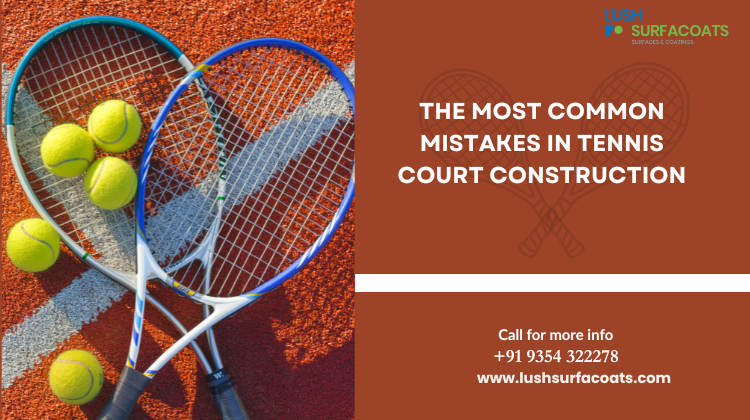.jpg)
How Tennis Flooring Impacts Game Performance: Insights for Players
- 2024-08-14
- Posted by: Admin
Tennis is a game that requires precision, agility, and strategy. While players often focus on perfecting their technique, one crucial factor that can significantly impact performance is the type of flooring they play on. Whether you're a seasoned professional or a budding enthusiast, understanding how tennis flooring affects your game can provide valuable insights to enhance your performance. In this article, we'll explore the importance of tennis flooring and its influence on player performance, while also touching on how it compares to basketball flooring.
The Role of Tennis Flooring in Performance
Tennis flooring is not just a surface to play on; it’s a critical component that influences the speed, bounce, and overall dynamics of the game. There are several types of tennis flooring, each with unique characteristics
Hard Courts: Hard courts are made of asphalt or concrete, topped with acrylic resins to seal the surface and add color. These courts provide a medium-fast game speed and a consistent bounce. However, they can be hard on the body due to their rigidity, potentially leading to injuries over time.
Clay Courts: Made from crushed shale, stone, or brick, clay courts are softer and slower than hard courts. They offer higher bounce and allow for longer rallies, which can be physically demanding but less jarring on the joints. Clay surfaces are known for their impact on game strategy, often favoring baseline players with strong endurance.
Grass Courts: Grass courts are the fastest type of tennis flooring. The ball tends to skid and stay low, making for a swift game. Grass surfaces require impeccable maintenance and can be slippery, adding an element of unpredictability. These courts are gentle on the joints but can be challenging due to variable bounce.
Synthetic Courts: Synthetic or artificial grass courts combine the benefits of hard and grass courts. They offer consistent bounce and are relatively easy on the body. These courts are gaining popularity due to their durability and low maintenance.
Comparing Tennis Flooring to Basketball Flooring
While tennis and basketball are distinct sports, their flooring needs share similarities in terms of impact absorption and surface consistency. Basketball flooring, typically made of wood or synthetic materials, is designed to provide optimal traction and shock absorption, which are also essential for tennis players.
Wood Flooring: In basketball, wood flooring is prized for its flexibility and shock absorption, qualities that help prevent injuries and provide a solid yet forgiving playing surface. For tennis, similar shock-absorbing qualities are beneficial, particularly for players prone to joint issues.
Synthetic Flooring: Both tennis and basketball benefit from synthetic flooring for its versatility and durability. These surfaces offer excellent traction and consistent performance across different weather conditions, making them a practical choice for both sports.
Choosing the Right Tennis Flooring
Selecting the right tennis flooring depends on various factors, including player preference, frequency of use, and maintenance capabilities. Here are some considerations:
Player Preference: Competitive players might prefer surfaces that complement their play style. For example, aggressive players might favor hard courts for their speed, while strategic baseline players might lean towards clay courts for the extended rallies.
Frequency of Use: Courts that see heavy usage, such as those in public facilities, might benefit from durable synthetic surfaces that require less maintenance.
Maintenance: Different surfaces have varying maintenance needs. Grass courts require regular mowing and care, clay courts need frequent watering and rolling, while hard and synthetic courts are relatively low-maintenance.
Conclusion
The impact of tennis flooring on game performance is profound and multifaceted. From the speed and bounce of the ball to the strain on a player’s body, the type of surface can shape the dynamics of the game. By understanding the characteristics of different tennis flooring options and how they compare to basketball flooring, players can make informed decisions to enhance their performance and enjoyment of the sport. Whether you're choosing a court for personal use or managing a sports facility, selecting the right tennis flooring is a critical step towards fostering a competitive and safe playing environment.
For more information on tennis flooring solutions, visit Lush Surfa Coats




.jpg)
Comments 106